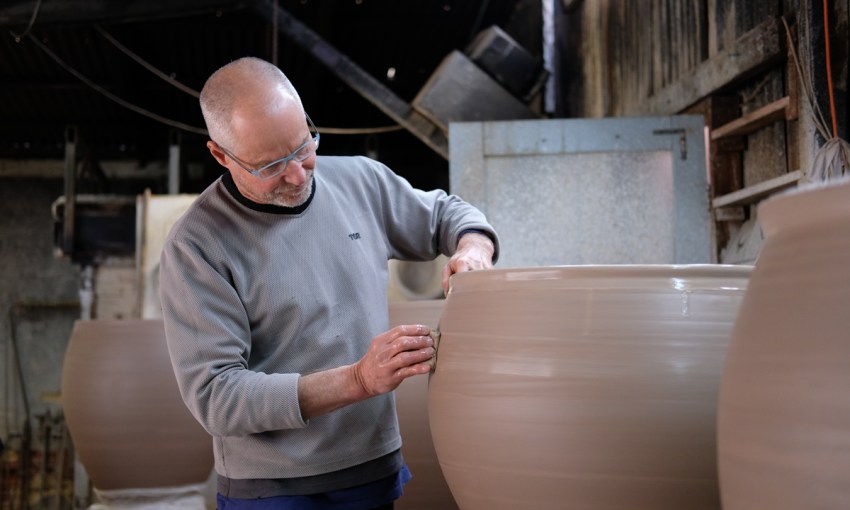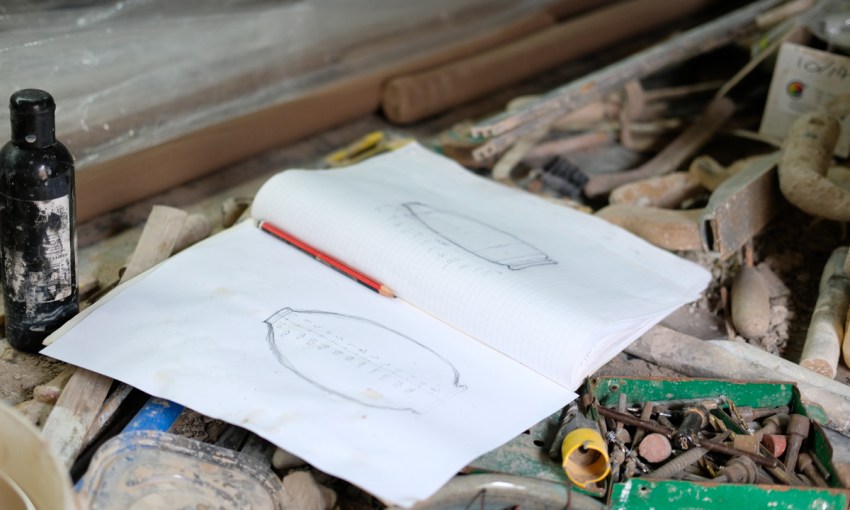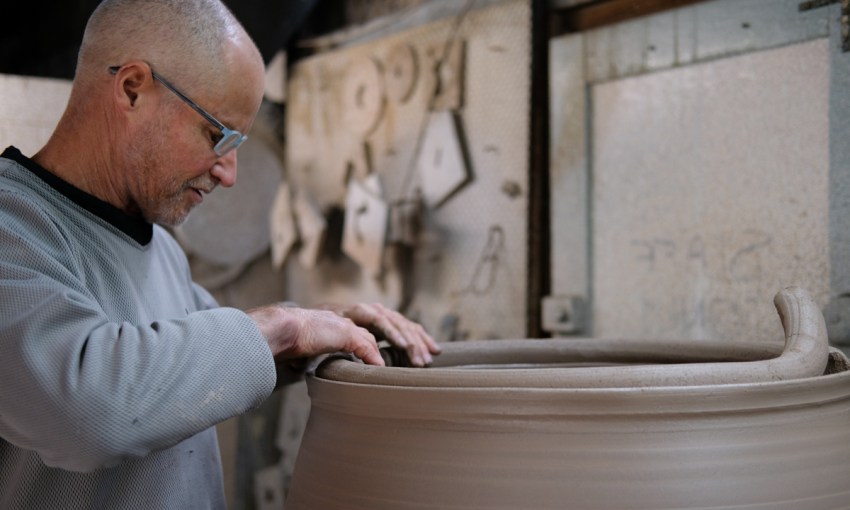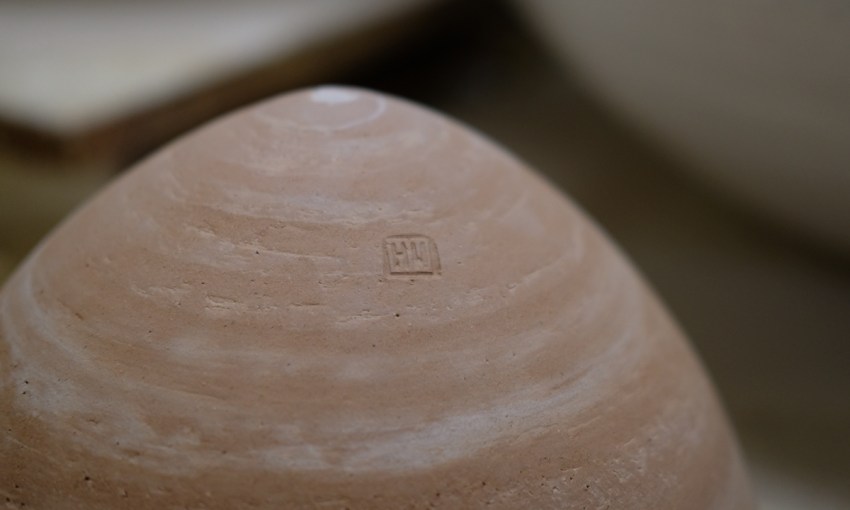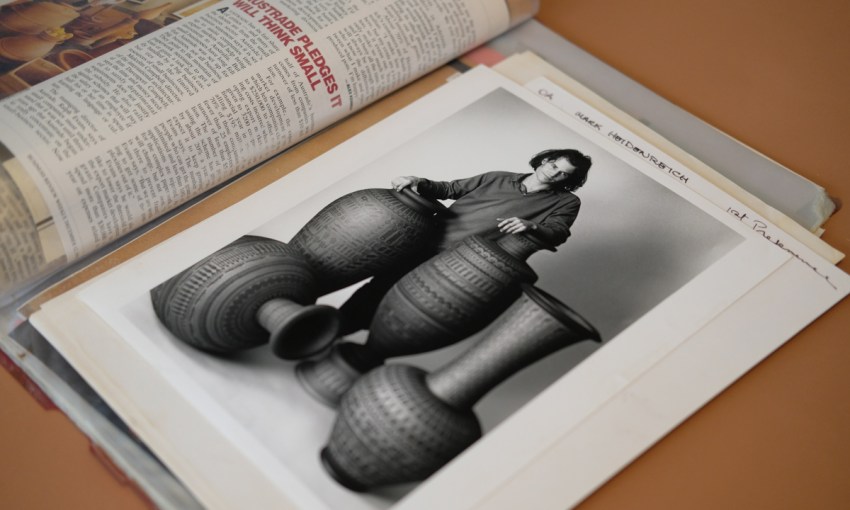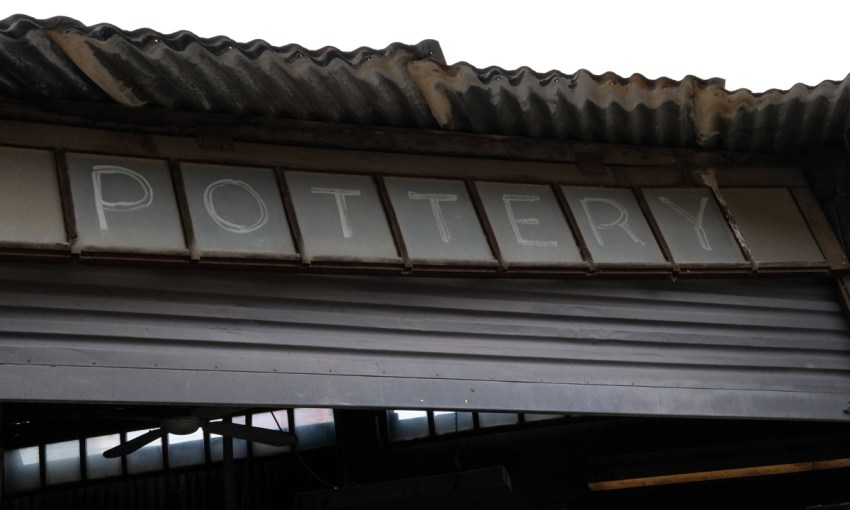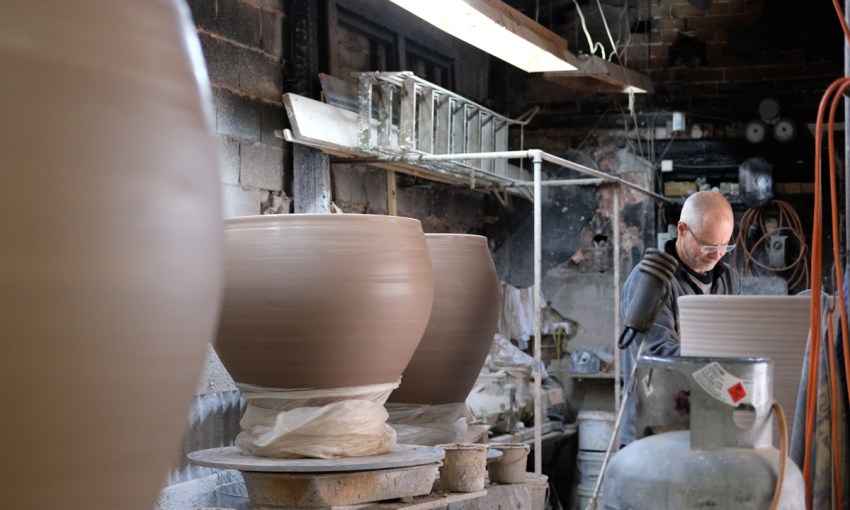In a ceramic studio off Gouger Street, Mark Heidenreich makes pottery with form and function in mind.
Mark Heidenreich: The winemaker’s potter
It was through no moment of clarity or greater calling that ceramicist Mark Heidenreich came to be a potter.
Mark Heidenreich’s business, Terra-Villa can be found at 10 Compton Street.
Not Quite White is happening from 4-5 August at Chateau Apollo. Purchase one- or two-day passes to the event here.
“I probably would’ve been just as happy doing something else, but clay is universal, cheap… You think you’ll take something cheap and turn it into something expensive and sell it,” he laughs.
It was the 1970s, Mark was a teenager, and the time had come to decide on what to do for a living. Australian youth culture was still riding an anti-establishment wave set off by the hippy movement a decade earlier, and in this context there was nothing more valuable than being a maker.
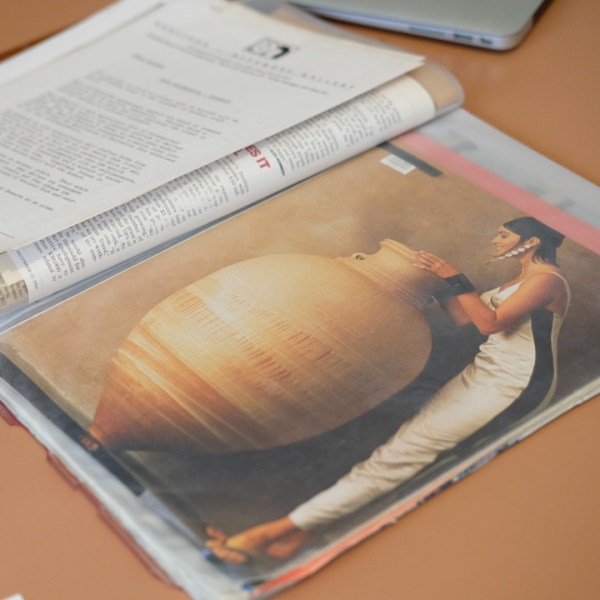
A Mark Heidenreich pot in a ’90s-era edition of Vogue.
“The notion of dropping out and doing something that wasn’t in the normal system was really admirable in the ‘70s,” Mark says.
“There were people dotted around the Hills and they were making macramé, or potpourri, or wooden this, or steel that, and the fact that no one was making a living didn’t matter, you weren’t participating in the system.”
This is a humble appraisal of the career Mark carved for himself in the 40-odd years since; by 1990, Mark had returned to Adelaide after a six-year stint in Sydney, and his work was added to the gardens and personal collections of Kerry Packer, Janet Holmes à Court, Government House in Adelaide, and the Powerhouse Museum in Sydney.
Despite this reception, Mark’s drive for creating was not founded in art and aesthetics.

“In the ceramics field, everyone’s thinking aesthetics, and there’s lots of words written about why it’s this aesthetic, which doesn’t make sense to me so much. I’m more interested from the engineering perspective, like how to make it. It’s quite tricky,” he says.
A preference for function over form has seen Mark find more practical ends for his pottery, and this has led to a growing roster of clients in the wine industry.
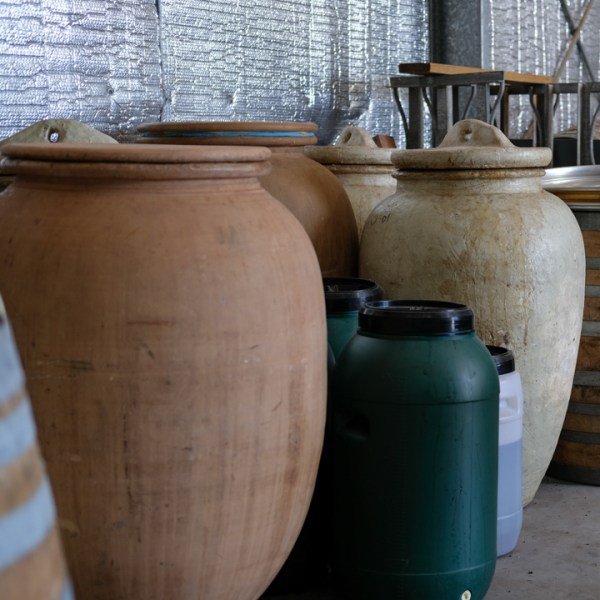
A collection of qvevri at Fall From Grace.
As a small cadre of producers in the Australian wine industry relax the standard methodological approach in favour of low-fi techniques, there has been a rise in people looking for traditional winemaking equipment, like the clay pots (also known as qvevri or amphora) used in Georgian winemaking.
“[I was] already making them, it’s a matter of shape,” Mark says.
“Each winemaker’s got a different idea of the perfect pot, you see, and it’s all pretty experimental.
“The Georgian ones, there’s a fair bit of variation within them – different regions will have their idea of what’s the perfect shape, and that’s interesting to me on another level, you know?”
When CityMag visits Mark’s CBD studio, there are three half-made pots spinning, which, once kilned, are destined for a winery in Gippsland. Closer to home, Mark has made pots for Gill Gordon-Smith at Fall From Grace, and for wineries in his native Barossa.
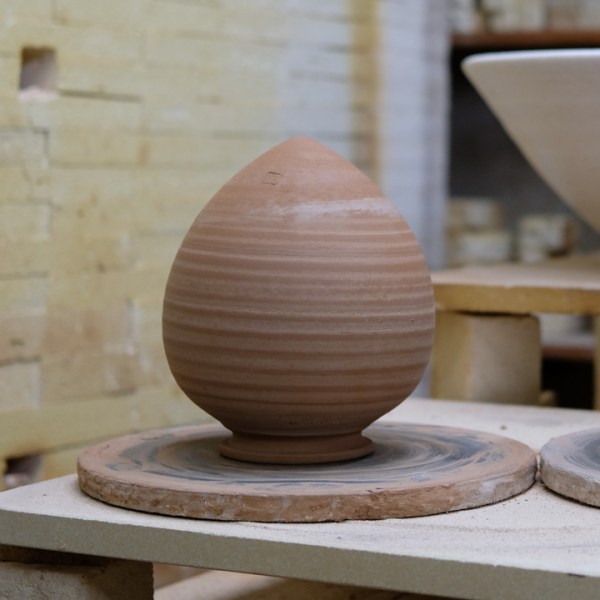
The Not Quite White trophy, prior to being fired in the kiln.
“I prefer to make something that’s functional, because it’s ethical,” he says.
“It’s a lot of gas and clay tied up in an object, and if someone’s just going to sit it in their yard, it makes more sense to me for it to be useful.”
The qvevri is an integral piece in the making of traditional skin contact white wine – otherwise known as amber or orange wine – and so it was natural for a partnership between Mark and The Fruitful Pursuit to occur for the upcoming orange wine celebration, Not Quite White.
Once the votes are tallied at the end of the two-day event – through the custom-designed web app, Pursuit of Yum – the winning winemaker will take home a miniature Mark Heidenreich pot as trophy.
“I’m just chuffed that someone sees a different value in what I’m doing. It’s great,” Mark says.



